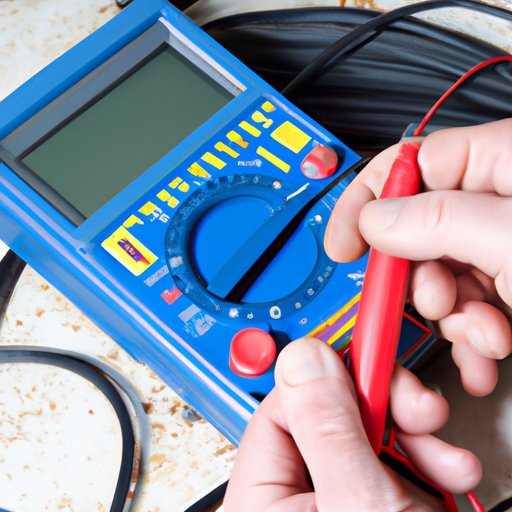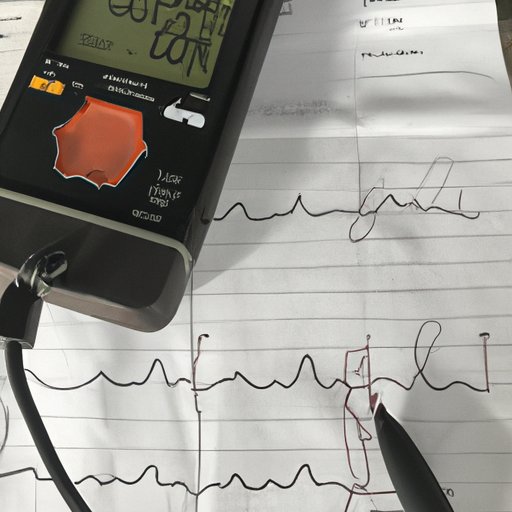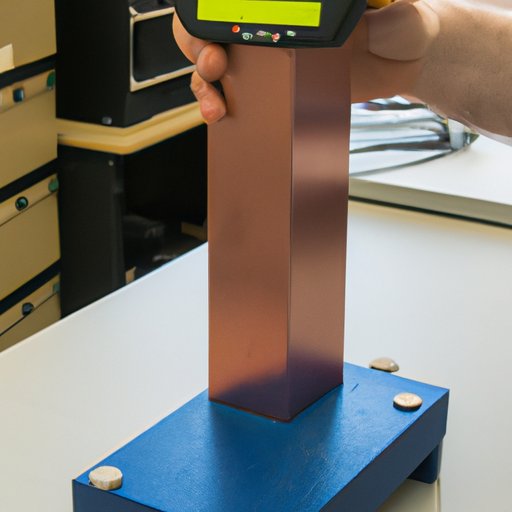Introduction
A car battery is an essential part of any vehicle. It helps start the engine and powers all the electrical accessories in the car, such as the radio, headlights, and windshield wipers. Over time, however, car batteries can wear down and lose their ability to hold a charge. That’s why it’s important to regularly test your car battery to make sure it’s still working properly. In this article, we’ll explain how to test a car battery at home using seven professional tests.

Check the Voltage with a Multimeter
The first step in testing a car battery is to check the voltage with a multimeter. A multimeter is a device that measures electrical current, resistance, and voltage. To check the voltage of your car battery, set the multimeter to the “DCV” setting and attach the red and black probes to the positive and negative terminals on the battery. The reading should be between 12.4 and 12.7 volts. If the reading is below 12.4 volts, then the battery is likely failing and needs to be replaced.
Inspect the Battery Cables and Terminals
Next, inspect the battery cables and terminals for wear and tear. Look for signs of corrosion or damage, such as frayed wires, loose connections, or cracked insulation. If you find any of these issues, replace the cables and terminals before continuing with the other tests.
Perform a Load Test
Once the cables and terminals have been inspected, it’s time to perform a load test. This test will measure the amount of current the battery can deliver under a heavy load. To do this, connect a load tester to the battery and turn it on. The results should show a voltage between 10.5 and 11.5 volts. If the voltage is lower than 10.5 volts, then the battery is likely failing and needs to be replaced.

Analyze the State of Charge
The next step is to analyze the state of charge of the battery. To do this, turn off all electrical accessories in the car, such as the radio, headlights, and windshield wipers. Then, disconnect the battery cables and let the car sit for 30 minutes. After 30 minutes, reconnect the battery cables and start the engine. The engine should start right away if the battery is fully charged. If the engine takes longer than normal to start, then the battery is likely not fully charged and needs to be recharged.
Use a Hydrometer
You can also use a hydrometer to measure the specific gravity of a battery. This test will tell you how much acid is in the battery cells, which can help you determine if the battery is holding a charge. To use a hydrometer, remove the cell caps from the battery and insert the hydrometer into each cell. The readings should be between 1.265 and 1.275. If the readings are lower than 1.265, then the battery needs to be recharged.

Conduct a Specific Gravity Test
Another way to test a car battery is to conduct a specific gravity test. This test measures the density of the sulfuric acid in the battery cells. To do this, use a hydrometer to measure the specific gravity of each cell. The readings should be between 1.265 and 1.275. If the readings are lower than 1.265, then the battery needs to be recharged.
Perform a Discharge Test
Finally, you can perform a discharge test to check the overall health of the battery. To do this, turn on all the electrical accessories in the car, such as the radio, headlights, and windshield wipers. Then, start the engine and let it run for 15 minutes. If the engine runs without any problems, then the battery is healthy. If the engine stalls or has difficulty starting, then the battery may need to be recharged or replaced.
Conclusion
Testing a car battery at home is a simple process that can help you determine if your battery is still working properly. There are seven tests that you can do: checking the voltage with a multimeter, inspecting the battery cables and terminals, performing a load test, analyzing the state of charge, using a hydrometer, conducting a specific gravity test, and performing a discharge test. By regularly testing your car battery, you can ensure that it stays in good condition and continues to provide reliable power to your vehicle.
(Note: Is this article not meeting your expectations? Do you have knowledge or insights to share? Unlock new opportunities and expand your reach by joining our authors team. Click Registration to join us and share your expertise with our readers.)
